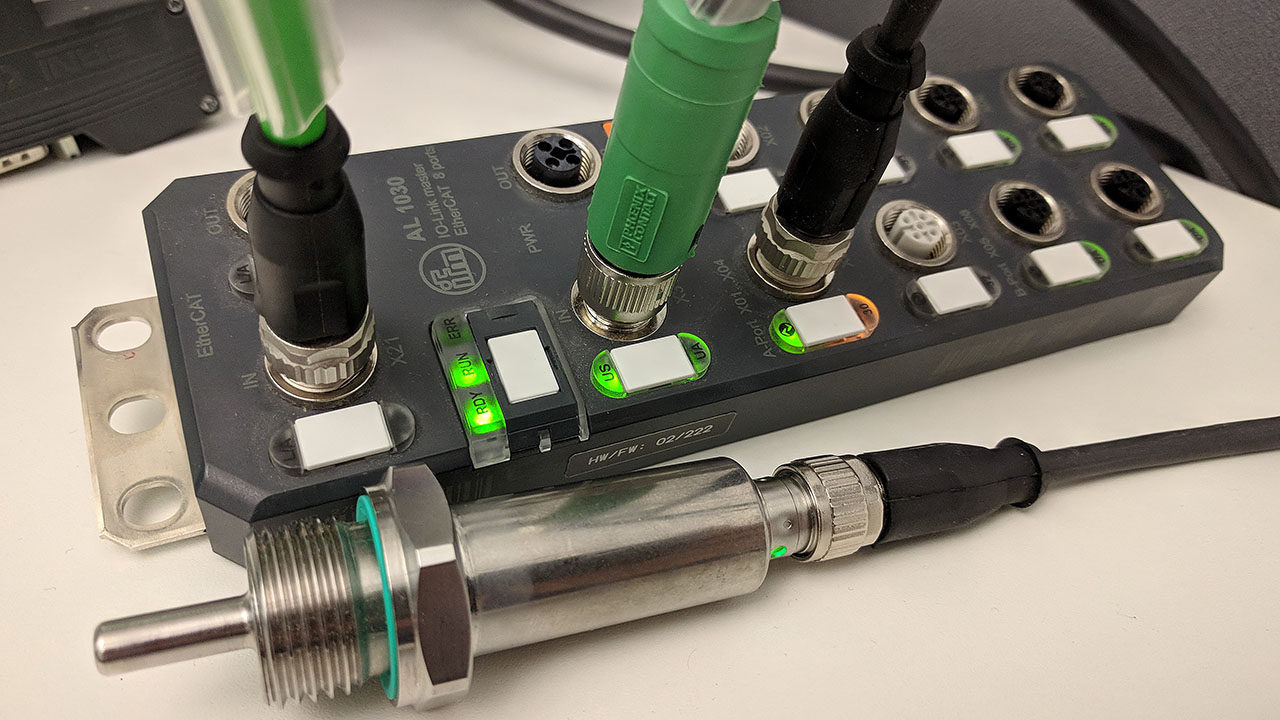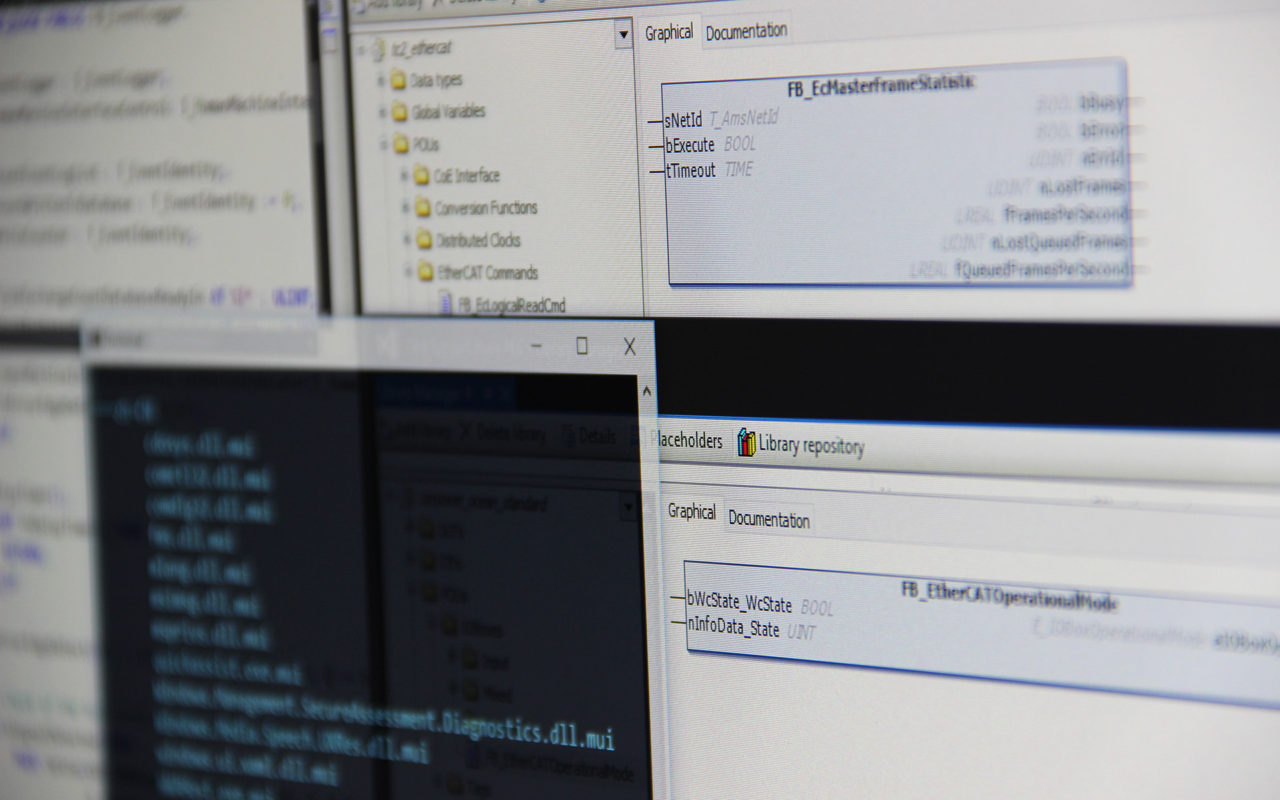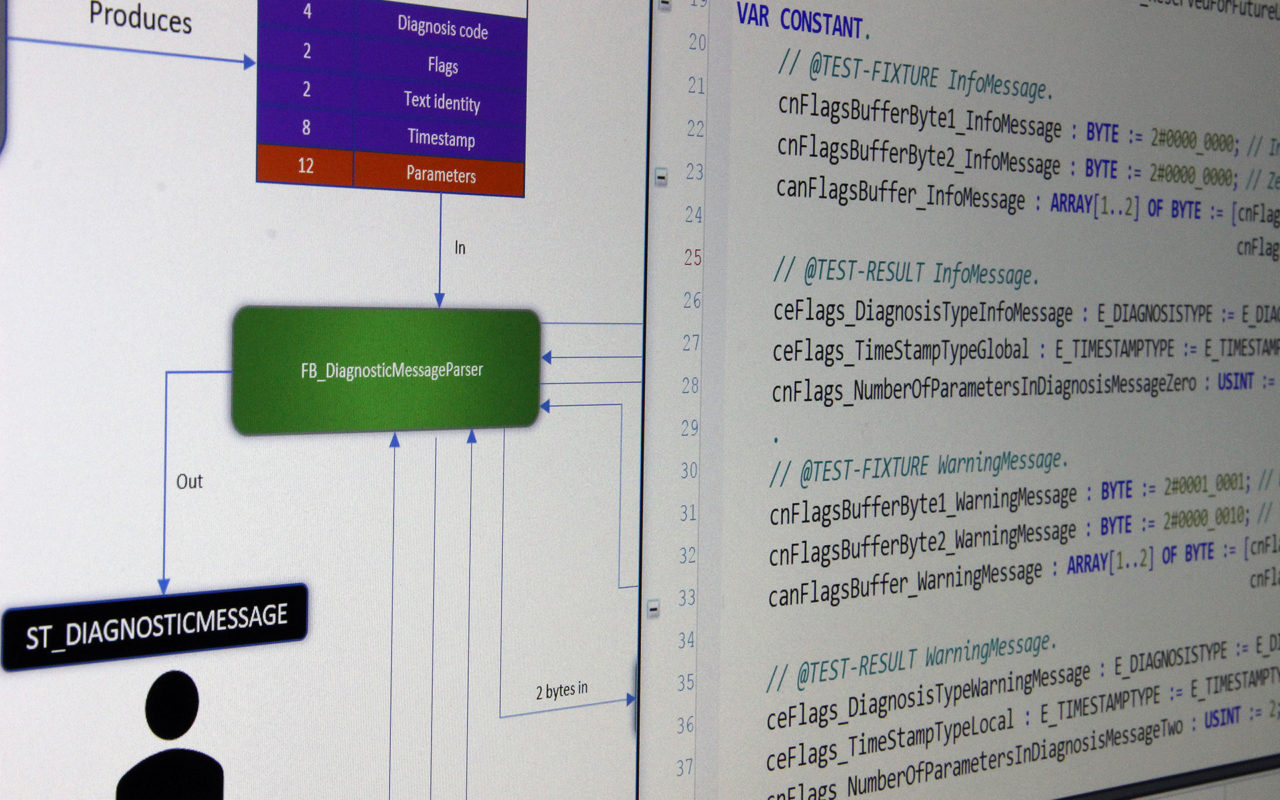 If you’ve done development in TwinCAT for some time, you’ve most likely come across at least one of the OSCAT libraries. These are open source libraries developed in accordance to the IEC61131-3 standard. They provide a total of three different libraries; OSCAT-Basic, OSCAT-Building and OSCAT-Network. I’ve so far only used the OSCAT-Basic library, which provides function blocks and functions for engineering, mathematics, string handling, time/date and much more. There is only a small problem with using the OSCAT-Basic library in TwinCAT – there is a broken reference in it! What follows is a guide on how you can fix this so that you can fully utilize this library in TwinCAT.
If you’ve done development in TwinCAT for some time, you’ve most likely come across at least one of the OSCAT libraries. These are open source libraries developed in accordance to the IEC61131-3 standard. They provide a total of three different libraries; OSCAT-Basic, OSCAT-Building and OSCAT-Network. I’ve so far only used the OSCAT-Basic library, which provides function blocks and functions for engineering, mathematics, string handling, time/date and much more. There is only a small problem with using the OSCAT-Basic library in TwinCAT – there is a broken reference in it! What follows is a guide on how you can fix this so that you can fully utilize this library in TwinCAT.
Test driven development in TwinCAT – Part 7
 We’re finally at the last post of this series! Patiently we’ve written all our tests and done all our code that implements the required functionality and made sure that our code passes all the tests. But in the end of the day, despite all the theory and coding we want our code to run on a real physical device. Now it’s time for the favorite part of every PLC programmer, which is getting down to the hardware and micro controllers! Let’s get to the grand finale, and test our code on a real PLC, IO-Link master and IO-Link slave.
We’re finally at the last post of this series! Patiently we’ve written all our tests and done all our code that implements the required functionality and made sure that our code passes all the tests. But in the end of the day, despite all the theory and coding we want our code to run on a real physical device. Now it’s time for the favorite part of every PLC programmer, which is getting down to the hardware and micro controllers! Let’s get to the grand finale, and test our code on a real PLC, IO-Link master and IO-Link slave.
Test driven development in TwinCAT – Part 6
 In part five of these series we started the implementation of the function blocks that we previously have done unit tests for. As we have our tests, we could verify that our newly implemented code did what it is supposed to do, and thus we made our code pass the tests. What we’ve got left is to do the implementation for three of the remaining function blocks. Once this is done, we have implemented all the required functionality that we’ve declared that our unit tests require us to.
In part five of these series we started the implementation of the function blocks that we previously have done unit tests for. As we have our tests, we could verify that our newly implemented code did what it is supposed to do, and thus we made our code pass the tests. What we’ve got left is to do the implementation for three of the remaining function blocks. Once this is done, we have implemented all the required functionality that we’ve declared that our unit tests require us to.
Test driven development in TwinCAT – Part 5
 In the last post of the series of unit testing in TwinCAT we finalized our unit tests, thus creating the acceptance criteria for the expected functionality for our function blocks. Now it’s time to do the actual implementation of the function blocks that we described in part 2 of these series. As we have our unit tests finished, we can anytime during our development run them and check whether the implemented code passes the tests.
In the last post of the series of unit testing in TwinCAT we finalized our unit tests, thus creating the acceptance criteria for the expected functionality for our function blocks. Now it’s time to do the actual implementation of the function blocks that we described in part 2 of these series. As we have our unit tests finished, we can anytime during our development run them and check whether the implemented code passes the tests.
Test driven development in TwinCAT – Part 4
 In the previous post we defined the general layout of our unit tests, and also did the implementation of the tests for two of the five function block that we’re going to use to verify the functionality of parsing IO-Link events. What we’ve got left is to create test cases for the parsing of the text identity and the timestamp of the diagnostic event. Then we also want to have a few tests that closes the loop and verifies the parsing of a complete diagnosis history message.
In the previous post we defined the general layout of our unit tests, and also did the implementation of the tests for two of the five function block that we’re going to use to verify the functionality of parsing IO-Link events. What we’ve got left is to create test cases for the parsing of the text identity and the timestamp of the diagnostic event. Then we also want to have a few tests that closes the loop and verifies the parsing of a complete diagnosis history message.
Test driven development in TwinCAT – Part 3
 In the last post of this series we were looking at a use case for a certain set of functionality, more specifically creating parser function blocks for the handling of IO-Link events. The result was a series of function blocks with defined input and output. In this post we’ll create the unit tests that will use the function blocks that we’ve started doing. Naturally, when defining the tests they will all fail as we don’t have the implementation code ready yet.
In the last post of this series we were looking at a use case for a certain set of functionality, more specifically creating parser function blocks for the handling of IO-Link events. The result was a series of function blocks with defined input and output. In this post we’ll create the unit tests that will use the function blocks that we’ve started doing. Naturally, when defining the tests they will all fail as we don’t have the implementation code ready yet.
Test driven development in TwinCAT – Part 2
 In my previous post I explained some of the benefits of using test driven development (TDD) while developing PLC software. This post is the second part of a series of seven, where we will look at a real use case scenario of writing test cases prior to doing the actual implementation. The scenario which I thought would be good for this is by creating a parser for IO-Link events. Shortly, IO-Link is a standardized point-to-point serial communication protocol used to communicate with sensors and/or actuators. It is not a fieldbus, but only takes care of the communication to the end device. As it’s a fully digital protocol that on top of process data also supports services such as events and parameterization, it’s standing well prepared for the Industry 4.0 thinking. One of the functionalities of IO-Link devices is that they can fire off events to the IO-Link master to notify that something has happened, for instance an alarm that something is wrong. To integrate these IO-link devices (slaves) into your EtherCAT network you need an IO-Link master, which usually allows you to connect 4 or 8 IO-Link slaves.
In my previous post I explained some of the benefits of using test driven development (TDD) while developing PLC software. This post is the second part of a series of seven, where we will look at a real use case scenario of writing test cases prior to doing the actual implementation. The scenario which I thought would be good for this is by creating a parser for IO-Link events. Shortly, IO-Link is a standardized point-to-point serial communication protocol used to communicate with sensors and/or actuators. It is not a fieldbus, but only takes care of the communication to the end device. As it’s a fully digital protocol that on top of process data also supports services such as events and parameterization, it’s standing well prepared for the Industry 4.0 thinking. One of the functionalities of IO-Link devices is that they can fire off events to the IO-Link master to notify that something has happened, for instance an alarm that something is wrong. To integrate these IO-link devices (slaves) into your EtherCAT network you need an IO-Link master, which usually allows you to connect 4 or 8 IO-Link slaves.
First cycle
One problem I face quite often is that I need to have some code executed only once in the first cycle of the PLC, and then never again. Up until now I’ve always used a boolean of some sort; “bFirstCycleExecuted”, instantiated to false and then set to true after the first cycle resulting in something like:
PROGRAM MAIN
VAR
bFirstCycleExecuted : BOOL := FALSE;
END_VAR
IF NOT bFirstCycleExecuted THEN
// The code that you want to be executed at the first cycle
bFirstCycleExecuted := TRUE;
END_IF
There actually is a built-in way in TwinCAT to know whether the current cycle is the first one or not, using the global data type PlcTaskSystemInfo. Among other parameters in this data type is the boolean FirstCycle. In your program you have access to an array of the data type PlcTaskSystemInfo, accessing it by _TaskInfo[index_of_current_task]. The index of current task can be retrieved by using the function block GETCURTASKINDEX. Replacing the above piece of code with our new knowledge results in:
PROGRAM MAIN
VAR
fbGetCurTaskIndex : GETCURTASKINDEX;
END_VAR
fbGetCurTaskIndex();
IF _TaskInfo[fbGetCurTaskIndex.index].FirstCycle THEN
// The code that you want to be executed at the first cycle
END_IF
Test driven development in TwinCAT – Part 1
Test driven deve lopment (TDD) doesn’t seem to be all too common among TwinCAT-developers, which is a shame. From my experience, TDD has a strong foothold everywhere among developers, but TwinCAT? Not so much. And I don’t blame them. There are TDD frameworks for C++, C#, Ada, Python and basically any other language and/or development environment. Do a Google search on the web on any programming language/IDE and TDD and you get thousands of results. Do the same for TwinCAT and you’re on your own.
lopment (TDD) doesn’t seem to be all too common among TwinCAT-developers, which is a shame. From my experience, TDD has a strong foothold everywhere among developers, but TwinCAT? Not so much. And I don’t blame them. There are TDD frameworks for C++, C#, Ada, Python and basically any other language and/or development environment. Do a Google search on the web on any programming language/IDE and TDD and you get thousands of results. Do the same for TwinCAT and you’re on your own.
Developing code for different runtimes
I guess you’ve seen the news, TwinCAT 3.1.4022.0 has been released. At one point or another, when developing TwinCAT software you eventually end up in wanting to write code for the latest runtime, but still being able to do software bug fixes/releases for code running on older TwinCAT runtimes. I thought it would be good to quickly share with you how you can work and develop multiple projects developed for different runtime versions but from the same developer machine!







